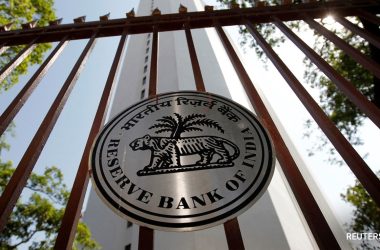New Delhi:
The 5G network rollout in India has been remarkable and the country is among the top three nations with the largest 5G installed base in the world, a top Nokia official said on Thursday. Nokia President and CEO Pekka Lundmark was addressing an event during the inauguration of the company’s 6G research lab in Bengaluru.
“5G rollout in India is truly remarkable. This has been one of the fastest telecom network roll-outs ever and means India is now among the top three countries in the world that have the largest 5G installed base, with 5G download speeds beating those found in many advanced markets,” Lundmark said.
While there has been a decline in telecom gear shipment across major geographies, the 5G rollout in India has been able to offset a dip in the business of Ericsson and Nokia.
Nokia posted 333 per cent growth in India sales at about Rs 9,500 crore in the June quarter of 2023.
Ericsson reported 74 per cent growth in net sales in the June 2023 quarter in “South East Asia, Oceania and India” to around Rs 10,700 crore of which around 90 per cent of its business comes from India.
Reliance Jio and Bharti Airtel are expected to invest about Rs 75,000 crore in the current financial year to strengthen their networks, according to a report by JM Financial.
According to the report, Jio may invest around Rs 42,000 crore and Bharti Airtel around Rs 33,000 crore in FY24, but the investment will taper down after their 5G network rollout target is met as per their announcement.
“We are satisfied with this work so far – but there is still more to do. We will continue to support India’s digital transformation across industry, society and public services,” Lundmark said.
Nokia’s 6G Lab was inaugurated virtually by Union Telecom Minister Ashwini Vaishnaw.
The first-of-its-kind project aims to accelerate the development of fundamental technologies and innovative use cases underpinned by 6G technology that will address the future needs of both industry and society.
Nokia’s 6G lab will function as a platform for collaboration among industry stakeholders and facilitate the testing of innovative solutions while establishing their potential for commercialisation.
The lab includes a setup to research ‘Network as a Sensor’ technology that enables the network to sense objects, people and movement without the need for onboard sensors.
In the 6G era, ‘Network as a Sensor’ has been identified as a key enabling technology that supports the vision of bringing the digital and physical worlds together, Nokia said in a statement.
Sensing will be fully integrated into the wireless network and operate simultaneously with communication services.
“Nokia’s experts at its Bengaluru centre will support India’s ambition to make notable contributions towards global 6G technology standards. Further, it is in the process of building research collaborations with premier research institutes in India like IISc and IITs to further scale up the 6G research initiative in India,” the statement said.
Last month, India’s vision to have ubiquitous coverage under 6G technology was accepted by UN body ITU’s Study Group in its meeting held in Geneva — a move that is expected to reduce the cost of deployment of the next-generation technology.
The International Telecommunication Union (ITU) decides on the development of international mobile telecommunication standards after coordination with its member countries, technology companies and other stakeholders.
India has already secured more than 200 patents on 6G technology through Industry and academic collaboration with the support of the Department of Telecom.
(Except for the headline, this story has not been edited by NDTV staff and is published from a syndicated feed.)
Waiting for response to load…








